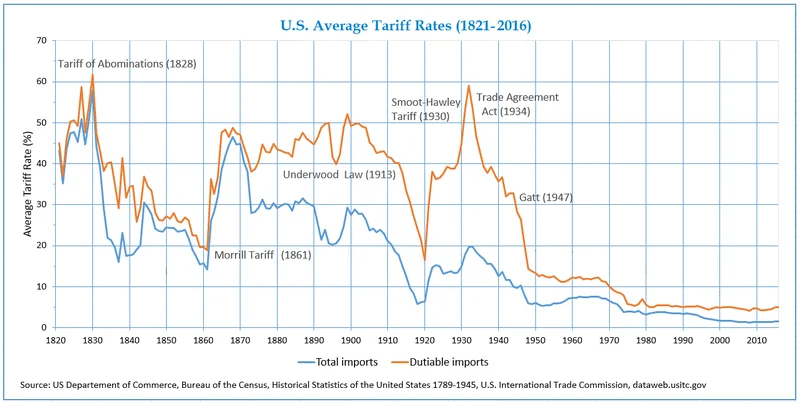A $2,000 check has been floated, a "tariff dividend" promised directly from the White House to the American public. It’s a compelling, simple pitch: new tariffs on foreign goods are generating a windfall, and that money will be returned to the people, minus high-income earners. As a political slogan, it’s brilliant. As a financial prospectus, it warrants a much closer look at the underlying numbers.
The official claim, articulated by Donald Trump, is that tariffs are bringing in "trillions of dollars," enough to fund these dividends and begin paying down the nation's $37 trillion debt (Is Trump Giving Out $2000 to Americans? Here’s What We Know). This is the top-line number presented to the market. But like any seasoned analyst knows, the headline figure rarely tells the whole story. You have to dig into the footnotes, check the cash flow, and question the assumptions. And when you do, the math behind this dividend proposal starts to look less like a sound investment and more like a speculative venture with some serious accounting discrepancies.
The first step is to ground the "trillions" claim in reality. The Congressional Budget Office (CBO) provides a more sober forecast, estimating tariff revenues could reach $3.3 trillion over the next decade. Annually, this averages out to between $300 billion and $400 billion. So, the "trillions" figure isn't entirely fabricated, it's just a question of timeline—a crucial distinction. The immediate problem arises when we set the cost of the dividend against this revenue stream.
According to an analysis by Erica York at the Tax Foundation, if we assume "high-income" means anyone earning over $100,000, approximately 150 million adults would qualify for the payment. A simple calculation (150 million people x $2,000) puts the annual cost of this program at nearly $300 billion. On the surface, this seems manageable. If tariffs bring in $300 billion and the dividend costs $300 billion, it’s a wash, right?
Not quite. This is where the analysis gets interesting.
This is the part of the plan that I find genuinely puzzling from a fiscal standpoint. It ignores a fundamental economic principle: revenue substitution. Tariffs aren't free money appearing from nowhere. They are a tax, and taxes impact economic behavior. When you tax imports, you raise prices and depress economic activity. That suppressed activity—fewer sales, lower corporate profits, reduced wages—means less revenue from other sources like income and payroll taxes.

York’s analysis quantifies this effect. For every new dollar raised from tariffs, the government loses about 24 cents in income and payroll tax revenue. It’s the fiscal equivalent of squeezing a balloon: apply pressure in one spot, and it just bulges out somewhere else. The net gain is always smaller than the gross pressure applied.
So, let's re-run the numbers with this offset in mind. That hypothetical $300 billion in gross tariff revenue doesn't actually add $300 billion to the Treasury. After accounting for the 24% offset, the net revenue is closer to $228 billion. Or, using York’s more direct figures from her post, the proposed $300 billion rebate would be funded by just $90 billion in actual, net revenue. The result isn't a balanced ledger; it’s a new, unfunded liability of $210 billion per year. Far from paying down the national debt, this specific proposal would actively increase it. What is the administration's model for this offset, and how does it differ so dramatically from the standard one used by non-partisan analysts?
This is a critical discrepancy. It reframes the entire proposal. The dividend isn't being paid for by a surplus; it's being financed by deficit spending, cloaked in the language of a tariff windfall. It’s like a company issuing new stock to pay a shareholder dividend—a classic sign of financial distress, not strength.
Perhaps sensing the fragility of the underlying math, the administration is already hedging. In a recent interview, Treasury Secretary Scott Bessent admitted he hadn't spoken directly with Trump about the dividend. More importantly, he immediately began to redefine the term. The $2,000, he suggested, could come in "lots of forms," including pre-existing tax cut proposals like making tips, overtime, and Social Security tax-free (A $2,000 check from Trump tariffs? Don't count on it).
This is a significant pivot. A tax cut on future earnings is not the same as a cash dividend from past revenues. One is a direct payment; the other is a change in future tax liability. Conflating the two is a financial sleight of hand. It’s an attempt to re-brand an existing policy agenda (tax cuts) as the fulfillment of a new promise (a cash dividend).
This raises a more fundamental question. Is the $2,000 figure a concrete financial plan or a marketing number designed to sell a broader, more conventional tax package? The ambiguity from the Treasury—combined with the fact this would require fresh legislation from Congress—suggests the latter. We are not discussing a funded, operational program. We are analyzing a proposal, and one whose core components seem to be shifting in real time. The details of who qualifies, how the payment is structured, and how it’s truly funded remain dangerously vague.
Ultimately, the $2,000 tariff dividend proposal suffers from a fundamental failure of arithmetic. The net revenue generated by the tariffs, once economic offsets are accounted for, is insufficient to cover the cost of the proposed direct payments. The subsequent "clarifications" from the Treasury are not clarifications at all; they are a strategic retreat from a specific, tangible promise to a vague collection of unrelated tax policies. The numbers, as they stand, simply do not support the narrative. The dividend isn't a return on a profitable national strategy—it's a liability in search of a funding source.